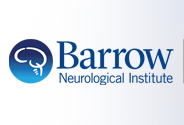Deep brain stimulation state of the art and novel stimulation targets.
Document Type
Article
Abstract
Levodopa therapy represents a major breakthrough in the treatment of Parkinson's disease (PD). As time and disease severity progresses, however, the shortcomings and adverse effects of this neurotransmitter replacement strategy become apparent and patients develop disabilities despite best medical therapy. The heightened awareness of these difficulties has given birth to a re-examination of functional neurosurgery for advanced PD. In the 20 years since the renewed interest in deep brain stimulation (DBS), approximately 60,000 patients with PD have undergone this surgery, with an annual accrual of 8000-10,000 new patients per year worldwide. Clinical studies have confirmed the beneficial effects of DBS surgery for the treatment of the cardinal motor features of PD. The likelihood of improvement, however, varies from symptom to symptom and from patient to patient. Surgery is very effective in reducing the motor fluctuations and dyskinesias--the primary reasons for patients' intolerance to medical therapy. Other problems are less or non-responsive. Further, despite the widespread use of this technology, the mechanism through which DBS alleviates symptoms is not fully understood. This review will discuss the patient population most likely to benefit from surgery, what aspects of the disease are most responsive, the current limitations of DBS, and new therapeutic targets that are being examined to address these limitations.
Medical Subject Headings
Animals; Antiparkinson Agents; Contraindications; Deep Brain Stimulation; Disease Progression; Humans; Levodopa; Parkinson Disease; Quality of Life; Treatment Outcome
Publication Date
1-1-2010
Publication Title
Progress in brain research
ISSN
1875-7855
Volume
184
First Page
311
Last Page
324
PubMed ID
20887882
Digital Object Identifier (DOI)
10.1016/S0079-6123(10)84016-6
Recommended Citation
Ponce, Francisco A and Lozano, Andres M, "Deep brain stimulation state of the art and novel stimulation targets." (2010). Neurosurgery. 2055.
https://scholar.barrowneuro.org/neurosurgery/2055


